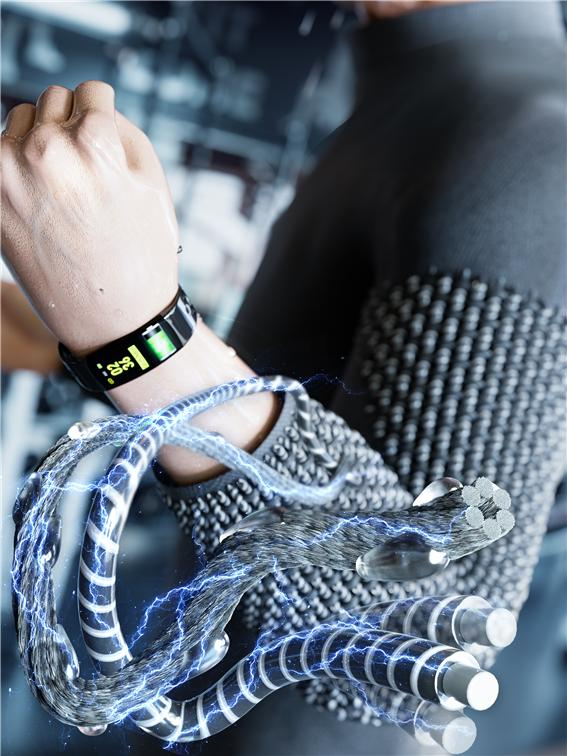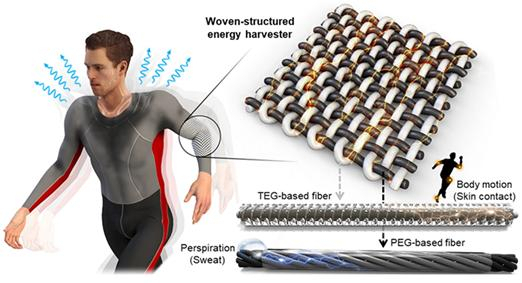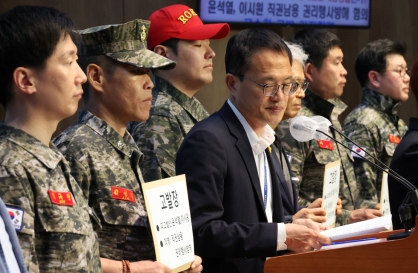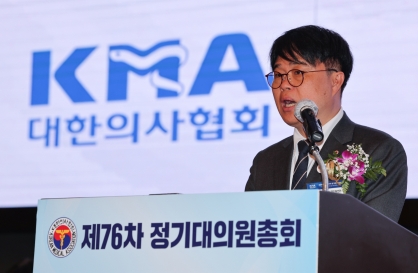'Smart fabric' generates power from sweat, movements
Korean researchers come up with high energy efficient, economic fabric technology
By Kan Hyeong-wooPublished : Aug. 15, 2023 - 14:41

South Korean researchers have developed a new type of fabric that can generate electricity from sweat and body movements, opening a new chapter of next-generation smart clothes.
According to the Korea Institute of Science and Technology on Tuesday, two teams of researchers at the institute’s electronic materials research center came up with the stretchable, washable energy-harvesting fabric that enables biomechanical and biochemical power generation.
The researchers weaved two different fabrics, which were equipped with a triboelectric generator (TEG) and a perspiration electric generator (PEG), together to create the new fabric. TEGs can transform mechanical power generated from body movements into electric energy. PEGs can produce electric energy as liquids such as water and sweat move along the fibers.
Previously, TEGs had limitations as their energy efficiency decreased due to humidity from sweat, and PEGs could produce little power, so it was difficult to put them to actual use.
The researchers overcame the limitations by applying melted sugar to create a TEG fabric that has improved energy efficiency with an increased friction surface. They also coated PEGs with ionic salt and parylene-C to boost the generation capacity.
Weaving one TEG through 36 PEGs to create two fabrics for clothing, the researchers succeeded in powering a position tracking sensor, which requires 3V, from only body movements and sweat.
KIST said the new fabric had a high chance of commercialization because the electrical output of the upgraded TEGs and PEGs was well maintained after washing the fabric 10 times, and mass production would make the material affordable.
“The technology we developed can be used for the sectors of electrical devices for clothing and wearable devices, but we expect it to be applied as a power source for those who are active in extreme environments such as firefighters, soldiers and mountain climbers,” said Song Hyun-cheol, a corresponding author of the study.
“We are carrying out additional tests to see if it can be utilized as a sensor in smart clothes that can offer various information about the human body.”
The research was published in Advanced Energy Materials in July.






![[Weekender] How DDP emerged as an icon of Seoul](http://res.heraldm.com/phpwas/restmb_idxmake.php?idx=644&simg=/content/image/2024/04/25/20240425050915_0.jpg&u=)


![[Music in drama] An ode to childhood trauma](http://res.heraldm.com/phpwas/restmb_idxmake.php?idx=644&simg=/content/image/2024/04/25/20240425050929_0.jpg&u=)









![[Herald Interview] Mistakes turn into blessings in street performance, director says](http://res.heraldm.com/phpwas/restmb_idxmake.php?idx=652&simg=/content/image/2024/04/28/20240428050150_0.jpg&u=20240428174656)
